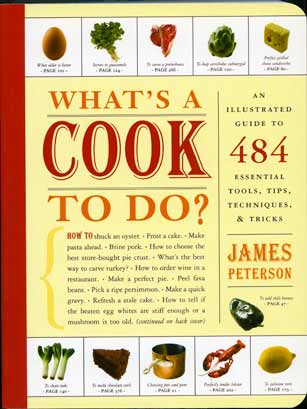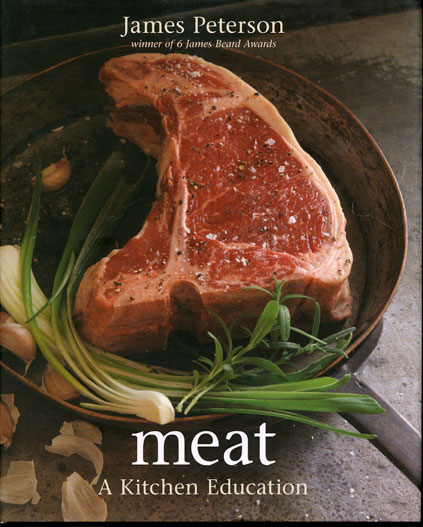Most of us assume a hare is just a big rabbit. This is not the case at all as hare, which is very large relative to rabbit, has red meat instead of white and a full gamey and very distinct flavor. It appears on menus in France during the fall, but rarely in the United States, in part, no doubt, because it’s illegal to buy food from hunters, at least for sale in restaurants. Hare is available in the United States (usually from Scotland) but it has been frozen. Frozen meat, while as flavorful as fresh, has the nasty habit of going from rare to well done in about 2 seconds.
While those not accustomed to game may find hare a little strong, for those of us who like it, it is one of nature’s great treasures. The legs can be braised (they tend to be tough but can contribute to the sauce) but the saddle (see under rabbit for more about the anatomy which is similar) should be roasted rare. It can be boned in the same way as a rabbit saddle (see page 000) and stuffed or not with all sorts of delicacies including foie gras and truffles.
Hare’s most famous interpretation is probably the civet, a stew finished at the end with the animal’s blood. An authentic coq au vin is an example of a civet.
My own approach to cooking hare is to bone the saddle (see an earlier entry for rabbit) and roast it (stuff it or not) quickly after braising the legs. I chop up the liver, combine it with any blood and an amount of butter equal to the size of the liver, and work the mixture through a strainer. When the saddle is roasted, I whisk some of the braising liquid from the legs into the giblet butter and then return this mixture back to the pan of braising liquid. I heat but don’t allow the sauce to reach to the simmer. I slice the saddle and serve the sauce on top or, if I’m presenting the whole thing at the table (a rather dramatic sight), I’ll sauce the whole saddle on a platter.
Hare is available frozen (the sale of fresh authentic game is illegal in the U.S.) from Scotland. It is sold by purveyors of fine poultry products.



I went hunting in Argentina and ended up with four giant hare that were inhabiting countryside soy fields. I took back to Buenos Aires, threw them in my fridge, and was very confused about what to do with them. I dug through some cookbooks and found a recipe in your book “Meat.” I followed that to the letter, roasting the saddle rare and braising the legs in a broth I made from the carcasses with wine, onion, carrots, and herbs. I didn’t bother with the giblet butter, but served it all up for a fairly large party (along with some more conventional dishes). No one had hare before and everyone loved it. The sauce was what really made it stand out. Great recipe.
Hi Ben,
Thanks for your comment. Isn’t hare glorious? I love its gamey flavor.
best,
jim